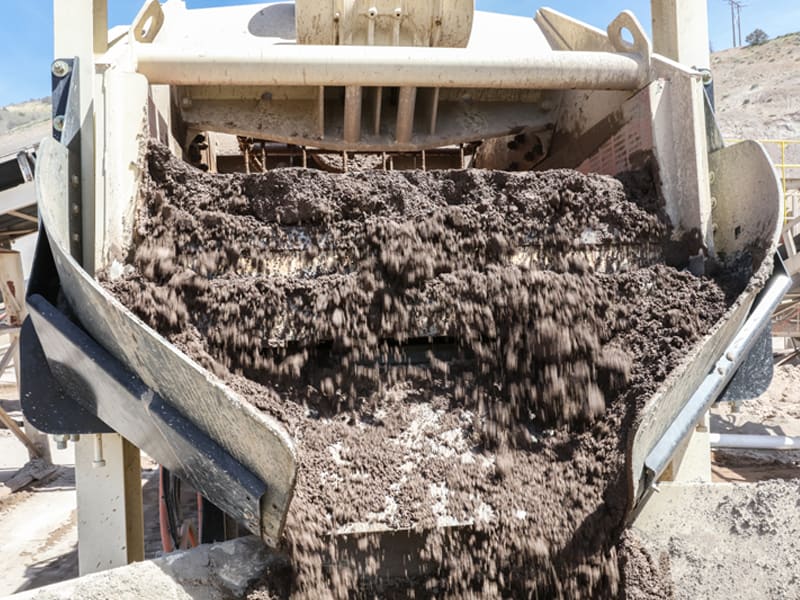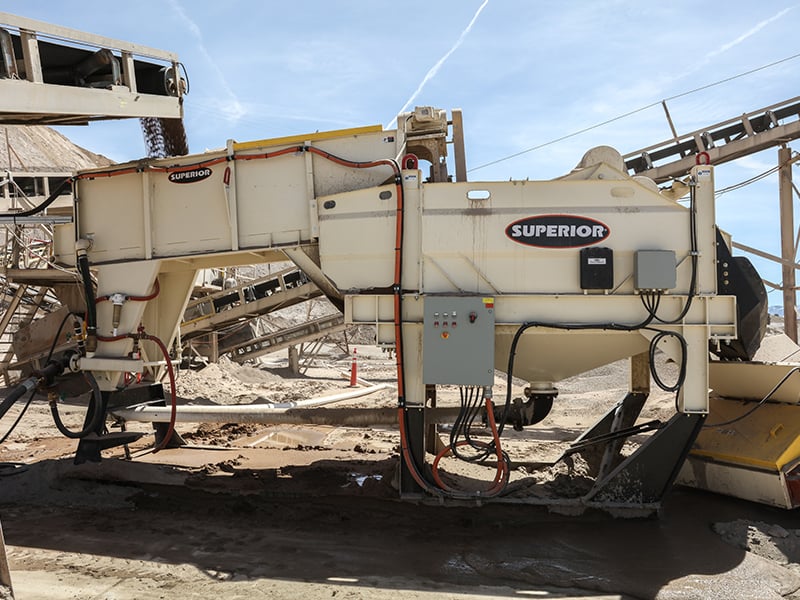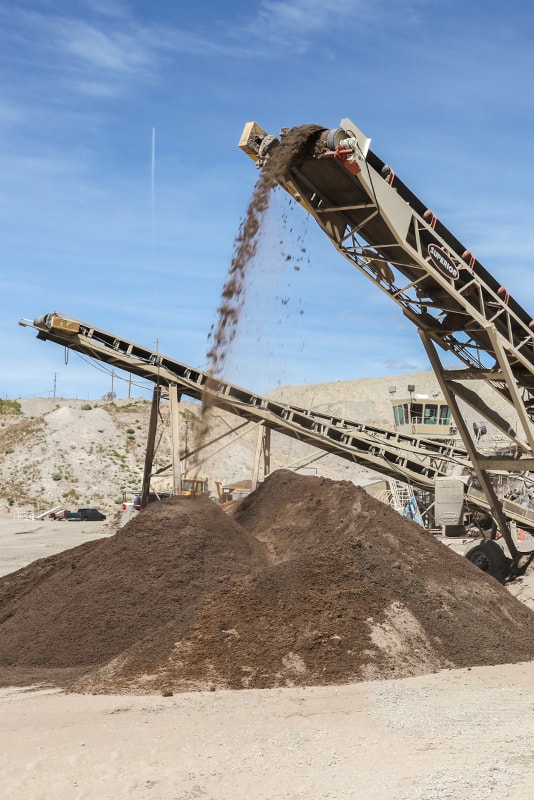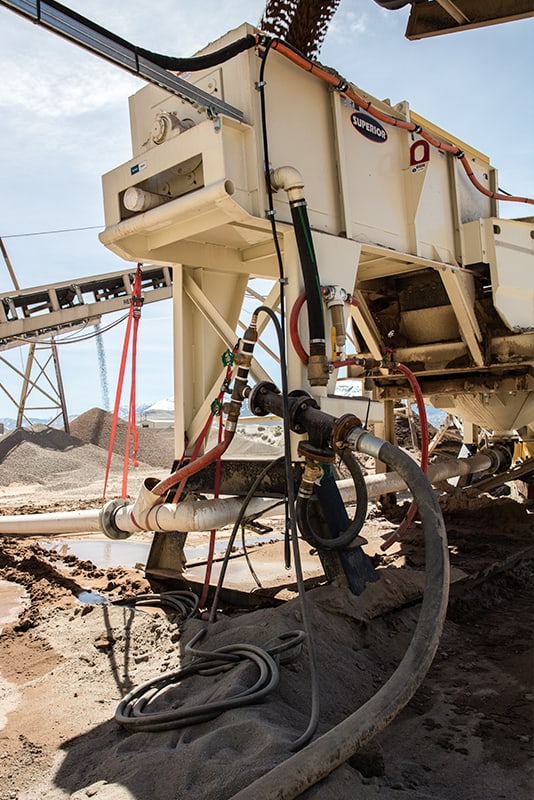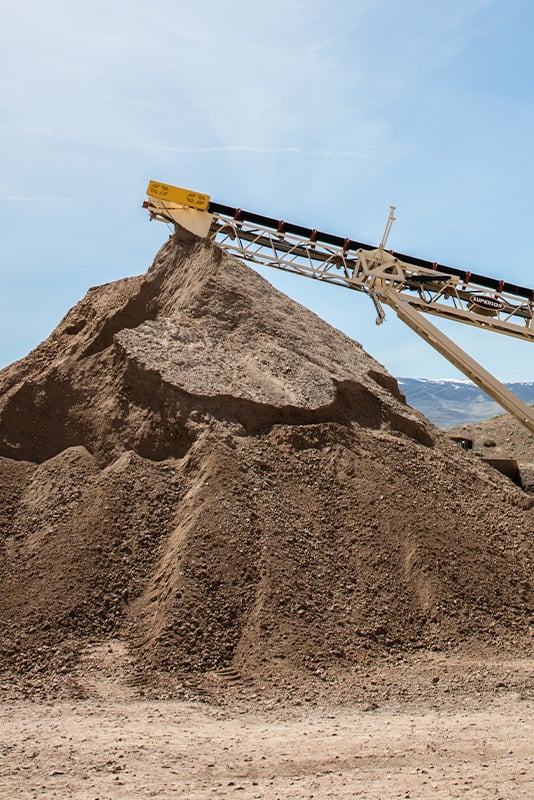New Profit
A New Economical Solution to Efficient Crusher Fines Management
Depleted natural sand reserves, environmental constraints, and decade-long permitting processes are just a few of the drivers behind a fast-growing demand for manufactured sand – and a significant need for efficient crusher fines management. To meet product specifications, operators are typically turning to costly air classifiers or high-water-use washing with cyclones or sand screws. While the latter options may work well for some operations, others are seeking alternative, affordable solutions especially if they operate dry crushing facilities, or portable plants; or if they are limited by their footprint or available water resources.
At issue is the amount of water required for conventional washing methods; and a welcomed access to a new, economical low-water washing solution. “A sand screw needs 50-gallons per minute of water for every ton of minus-200-mesh in the feed,” says John Bennington, director of washing and classifying equipment for Superior Industries. “Even if an operation is only running at 100-tons per hour, and their minus-200-mesh is at 15-percent – that is 15 tons of fines requiring 750-gallons per minute of water to adequately lift the silt over the weirs of the screw. That’s a lot of water for most crushing operations,” he says.
As an industry veteran in washing and classifying, Bennington had been brainstorming a low-water washing solution for many years, and “with the resources of Superior Industries, we were able to design it, refine it, and prove it in the field,” he says, referring to the new Alliance Low Water Washer. Bennington explains that the unit combines a specially-designed agitator and a dewatering screen within one machine. It allows the operation to wash crusher dust right next to the crushing circuit, eliminating the cost of handling and hauling the fines to a separate washing circuit. Notably, he says that the system accepts a dry feed directly from the crushing circuit and processes the material into a higher-value manufactured sand, while requiring up to 80-percent-less water consumption.
Project Details
LOCATION
Reno, Nevada
APPLICATION
Aggregates: Sand & Gravel
PRODUCT(S)
Alliance® Low Water Washer
Summary
Rilite Aggregate was facing a water management challenge. They needed an aggressive washing system that could run off available water. They installed an Alliance Low Water Washer in February of 2017 and the results were lower washing costs and moisture content of the material.

Field-Proven Operation
Reno, Nevada-based Rilite Aggregate was facing a water management challenge. The company had been washing its concrete sand with a 54-inch twin screw that required 2200-gallons per minute. “We had to fill a holding pond and utilize a large pump. With that, we could wash material for only three hours per day,” says Michael Rudolph, a long-term crushing subcontractor who has worked with Rilite for nearly 20 years. He adds that the facility must use an additional 60,000-gallons per day to fill the water trucks used to wet the quarry roads for airborne dust control. The water management situation reached a “crisis-mode” when a specification change in utility bedding sand required the company to wash that product as well, lowering the minus-200-mesh from 15-percent to 7-percent or less.
Rudolph says that they needed an aggressive washing system that could run off available water. “With a drastic change in sand specifications, we were forced to add washing capacities, so we wanted a lower cost, lower maintenance solution that would limit water use. We have our own well but it only pumps 220 gallons per minute,” he says. The local Superior Industries dealer, Kimball Equipment, referred Rudolph to John Bennington. Soon thereafter, Rudolph and the local dealer flew to a quarry location in Traverse City, Mich., to see the prototype of the Alliance Low Water Washer in action.
According to Bennington, the operation in Michigan is processing about 100- to 120- tons per hour of feed through the low water washer, and generally runs 200- to 250-gallons of water per minute, pumped from a well. The raw feed averages about 22-percent minus-200-mesh. At that rate, the conventional sand screw would require 1100-gallons per minute. “After washing, the operation is achieving under a 6-percent minus-200-mesh, with a target of 4-percent after further refinements,” he says.
At the Michigan site, Rudolph ran pre- and post-wash samples through the new washer, and found that the unit would meet Rilite’s specification requirements. This led to the installation of the Alliance Low-Water Washer at Rilite Aggregate in February of 2017.
“I had the site ready to go, so it was a matter of unloading the truck, plus one day of hookup, and we were in business washing bedding sand at 175- to 200-tons per hour – and it handles that capacity in such a small footprint, allowing us to install the washer without making any modifications to the existing plant,” says Rudolph. He adds that he’s placed a belt stacker in front of the washer that can swing to feed the washer or swing away to bypass the washer when needed.
Rudolph says that the low-water washer averages about 300-gallons per minute of water usage fed from a large fresh water pond that acts as a surge system for the well, which is used daily to fill the water trucks. “Versus the previous use of twin sand screws at 2200-gallons per minute, I now vary my flow rate to the low-water washer between 200- to 400-gallons per minute. This has dramatically lowered our washing costs. We can conserve water, and manage its use without jeopardizing our need for water trucks for dust control,” he stresses.
Importantly, Rudolph points to the moisture content of the material after washing. “It’s between 11- and 13-percent. With that, we can sell the product within one day. With our previous setup, we had 22-percent moisture content after washing and had to let the material sit and dry for about a week,” he says, summing up the biggest advantage – “low water use and large throughput.”
Efficient Fines Management
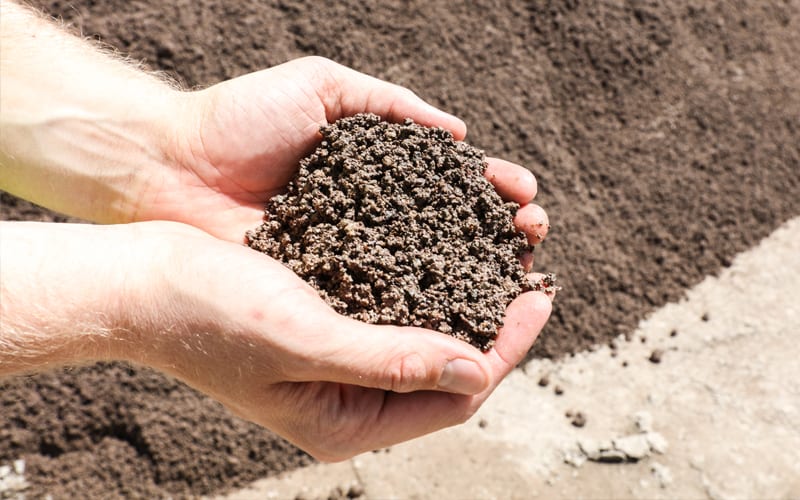
Depleted natural sand reserves, environmental constraints, and decade-long permitting processes are just a few of the drivers behind a fast-growing demand for manufactured sand – and a significant need for efficient crusher fines management. To meet product specifications, operators are typically turning to costly air classifiers or high-water-use washing with cyclones or sand screws. While the latter options may work well for some operations, others are seeking alternative, affordable solutions especially if they operate dry crushing facilities, or portable plants; or if they are limited by their footprint or available water resources.
At issue is the amount of water required for conventional washing methods; and a welcomed access to a new, economical low-water washing solution. “A sand screw needs 50-gallons per minute of water for every ton of minus-200-mesh in the feed,” says John Bennington, director of washing and classifying equipment for Superior Industries. “Even if an operation is only running at 100-tons per hour, and their minus-200-mesh is at 15-percent – that is 15 tons of fines requiring 750-gallons per minute of water to adequately lift the silt over the weirs of the screw. That’s a lot of water for most crushing operations,” he says.
As an industry veteran in washing and classifying, Bennington had been brainstorming a low-water washing solution for many years, and “with the resources of Superior Industries, we were able to design it, refine it, and prove it in the field,” he says, referring to the new Alliance™ Low Water Washer. Bennington explains that the unit combines a specially-designed agitator and a dewatering screen within one machine. It allows the operation to wash crusher dust right next to the crushing circuit, eliminating the cost of handling and hauling the fines to a separate washing circuit. Notably, he says that the system accepts a dry feed directly from the crushing circuit and processes the material into a higher-value manufactured sand, while requiring up to 80-percent-less water consumption.
Have questions? Need more information? Complete the form below and we will follow up shortly.
Request More Info
See our privacy policy.

